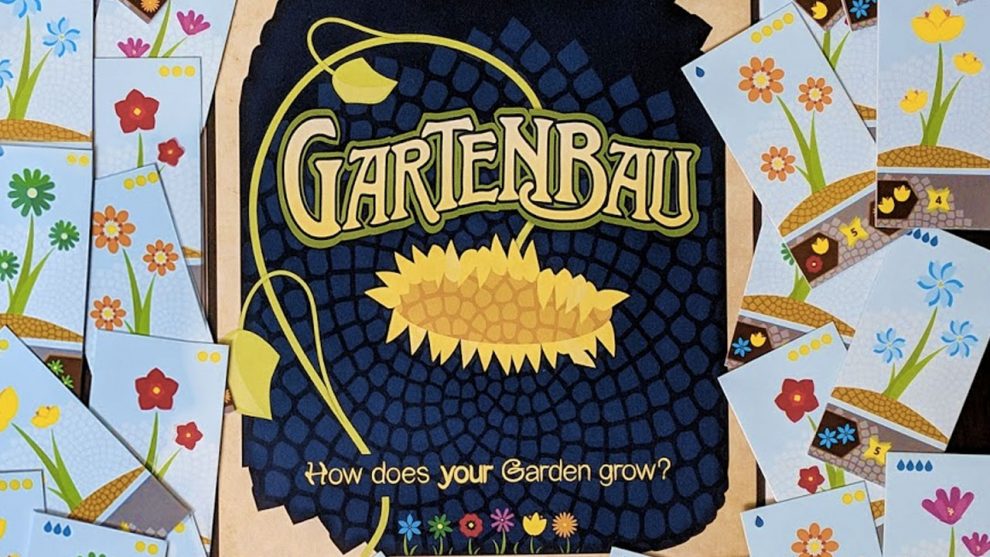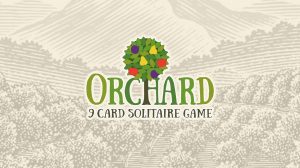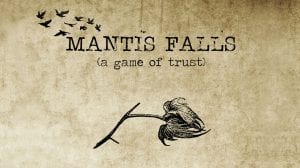Disclosure: Meeple Mountain received a free copy of this product in exchange for an honest, unbiased review. This review is not intended to be an endorsement.
There’s nothing contrary about upcoming Kickstarter game, Gartenbau. Designed by Alex Johns and David Abelson, Gartenbau finds a way to evoke tranquility and peace amidst a race for limited resources and prestige. Much like a dog show or a small town garden contest, Gartenbau hides what would normally be a cutthroat competition with a thick cover of civility, cuteness, and beauty. Where the former contests require hard work and experience, this latest contest of flower gardening requires flexible puzzle solving to grow the most prestigious garden and be crowned the Master Gardener. Read further to learn more about Gartenbau, how it plays, and why I’m itching to put my maids all in a row.
Disclaimer: Meeple Mountain was provided a pre-production copy of the game. It is this copy of the game that this review is based upon. As such, this review is not necessarily representative of the final product. All photographs, components, and rules described herein are subject to change.
Theme and Artwork
“Gartenbau” is actually German for “horticulture.” The German naming is no accident and helps to signal that Gartenbau is a Euro style game (though fully American in creation). In Gartenbau, each player takes on the role of a gardener who is racing to grow 4 fully mature flowers from seedlings. However, the theme doesn’t begin with flowers and gardening.
Instead, the designers have indicated that Gartenbau is based on color theory and it shows throughout the game. The colors of the game begin with a combination of primary and secondary colors and combine towards tertiary colors. Some of the options in the game allow you to stick with primary colors or combine with secondary colors. Fortunately, a knowledge or awareness of color theory is not needed to play the game. The flowers are distinct in design in addition to color, so even people dealing with color-blindness can play the game with no real disadvantage. Personally, I made a few less than optimum placements when I failed to distinguish violet from red in low-light conditions, but fixed it by paying more attention to the petal design.
I find the overall design to be elegant, beautiful, and easy to understand. The game moves through three stages – seedlings, plants, and flowers – but each stage is represented with what I would call a flower. That’s important because while seed iconography might fit more thematically, it could make it more difficult to understand the stage progression. The stages do progress in size and complexity of design, but at no point does the increasing complexity inhibit the player from understanding the information on their board.
Setup
The game is quick to set up. First, you shuffle the seedling tiles, which are similar to dominoes. Place 5 of them face up in a row next to the remainder to form a market, much like the Resource cards in Five Tribes. Then you place the 6 types of plant tiles in 6 separate stacks in order of the listed prestige, with the lowest on top.
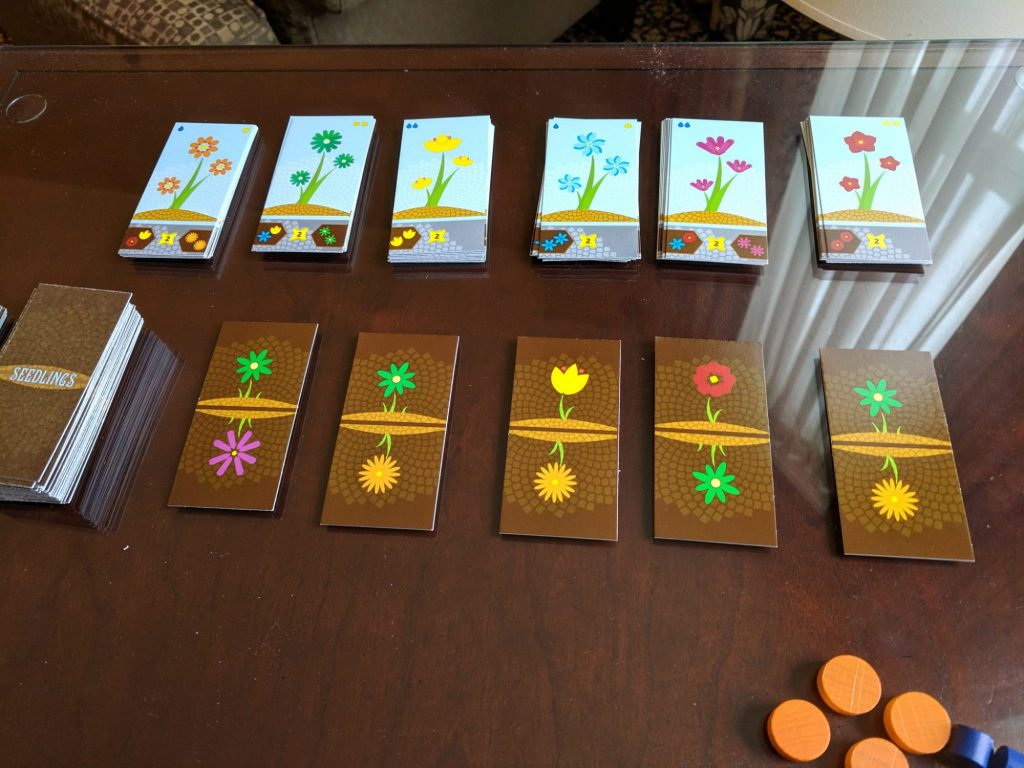
Next, you shuffle the 21 Flower tiles (gigantic squares) and do a draft. You’ll receive 5 tiles, pick one, and pass the rest to the player on your left. Then you can keep any two of these 5 and pass the remaining 3, and so on until you keep 4 tiles and discard the 5th completely. Because this is such an important stage that influences the end-game scoring, first time players are encouraged to start the game with some recommended pre-set starting hands. This is good as it helps avoid picking conflicting flowers on your very first play of the game. I managed to pick conflicting flowers on my second play of the game and I estimate that it cost me the game by 5 points.
The game is designed for 2-4 players. In a 2 player game, dummy drafts are used, presumably for balance or additional strategy concerns.
After the draft, players may pick any combination of five resources from the two types of resources, sunlight and water.
Because my copy was a prototype, the rules have undergone a change which I never played in the next step. At this point, a starting seedling tile is dealt to each player and players choose either side of it to begin their garden tableau. Each player also gets three special tiles which allow you to do a few extra things during the course of the game, such as fix a mistake, get extra resources, or reset the seedling market. I played without these starting and special tiles and feel that they are probably a nice addition but not critical.
Gameplay
Once you’ve set up the game, you’ll find yourself staring at four flower tiles in your hand thinking, “uh, now what?” Each of those four flowers will have two key pieces of information: the requirements to play it and how it scores prestige points for you. To maximize your prestige, you won’t just slap your flower down at the first chance you get. You’ll instead want to figure out how to maximize its prestige scoring potential. A few score a flat amount, so those are just simply slap down cards. A majority of the flower tiles score based on which other plants and flowers you have and/or how they are laid out in comparison to each other. These scoring mechanisms encourage you to do more than just fulfill the exact planting requirement of your flowers.
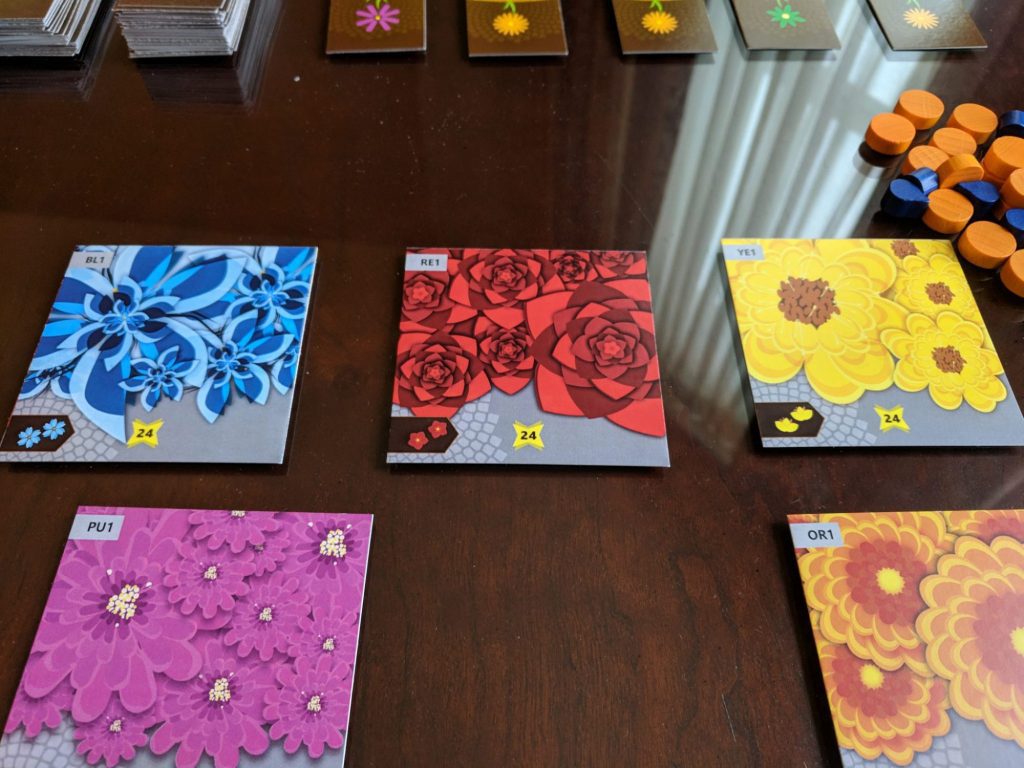
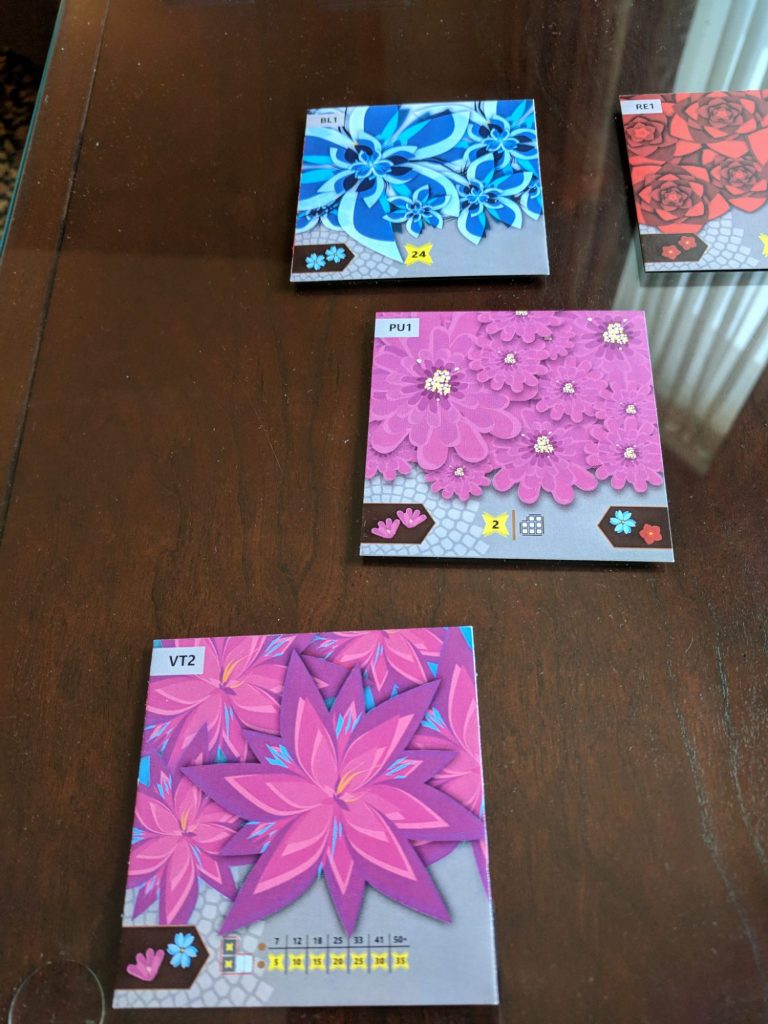
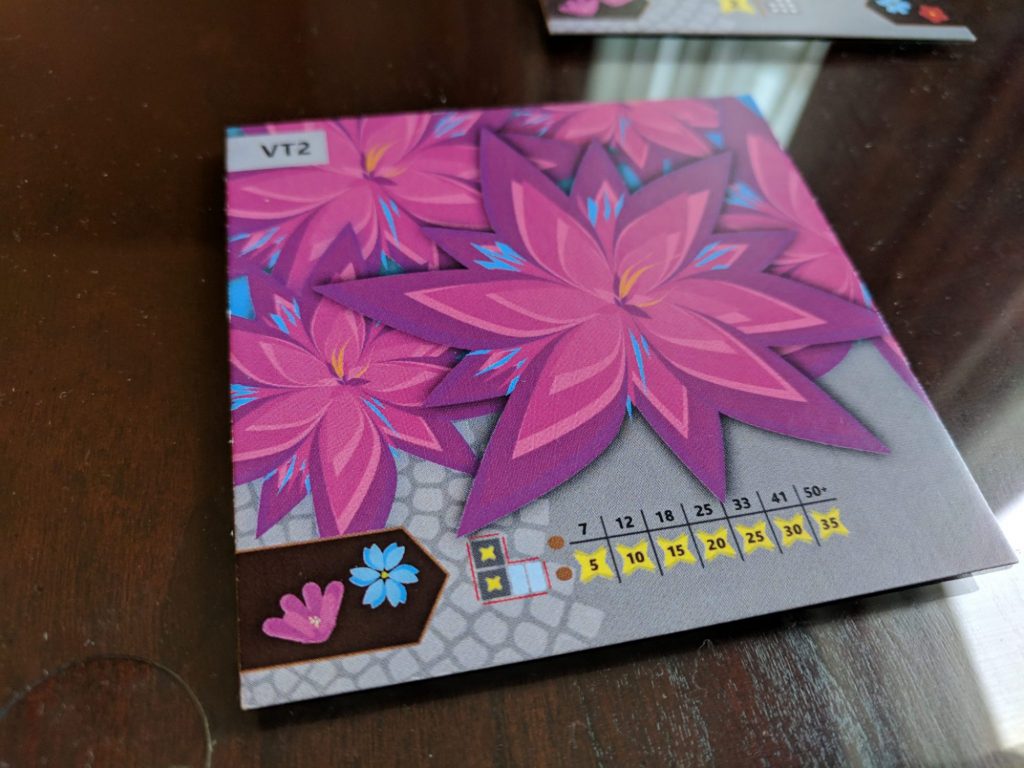
Each turn, you’ll pick one action to perform from four possible options. Here’s an abbreviated description:
Acquire and Place Seedlings
First, acquire one of the face-up seedling tiles from the market. The first seedling tile in the row is free, but if you wish to take a tile beyond the first, you’ll place one resource token onto each passed up tile. This creates incentive to take passed over tiles later.
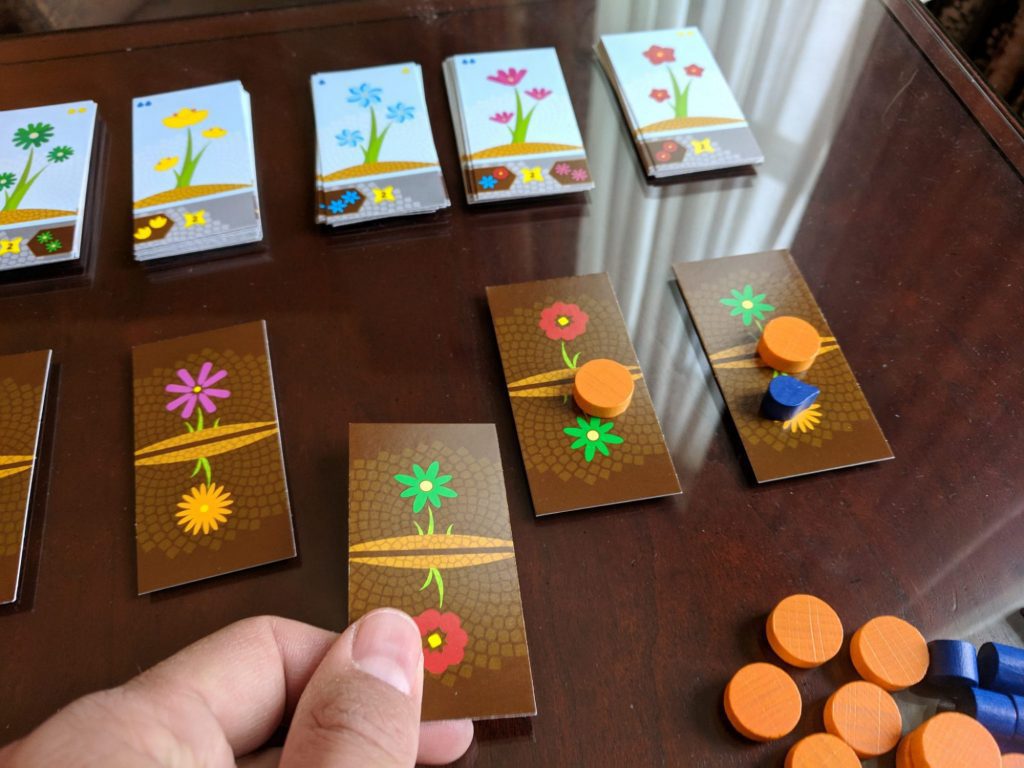
Second, place the acquired tile adjacent to another tile in your garden space. Each seedling tile is structured like a domino with a different type of petaled flower instead of dominos’ numbers. These are placed so that at least one half is adjacent to another, but no matching is required.
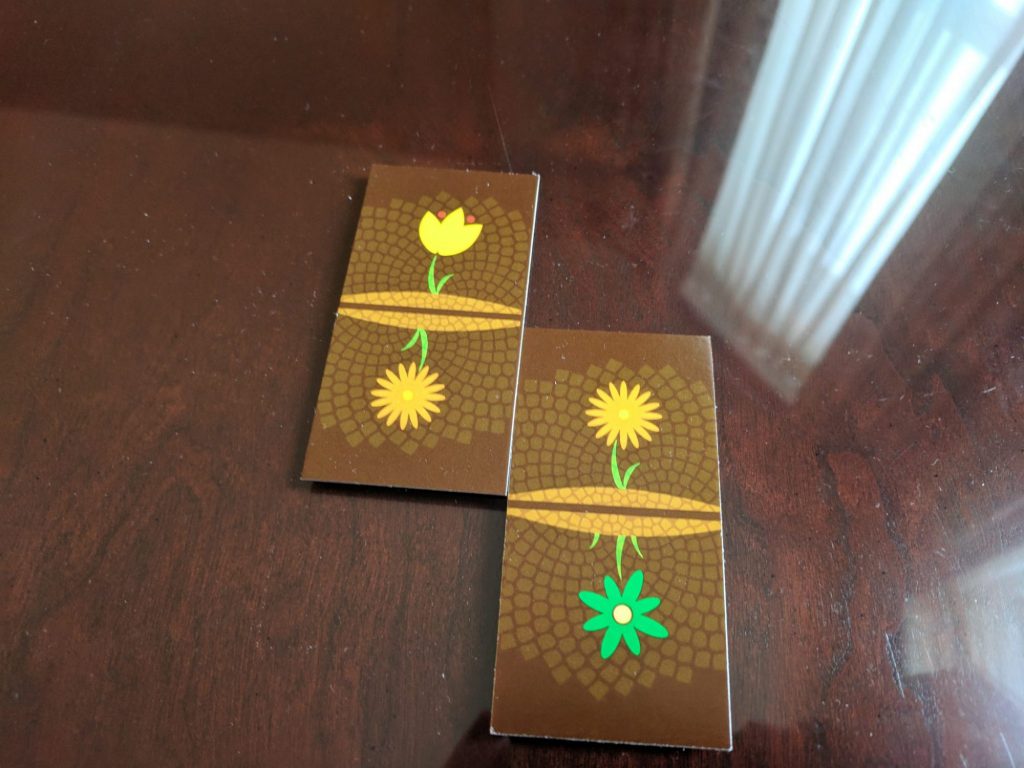
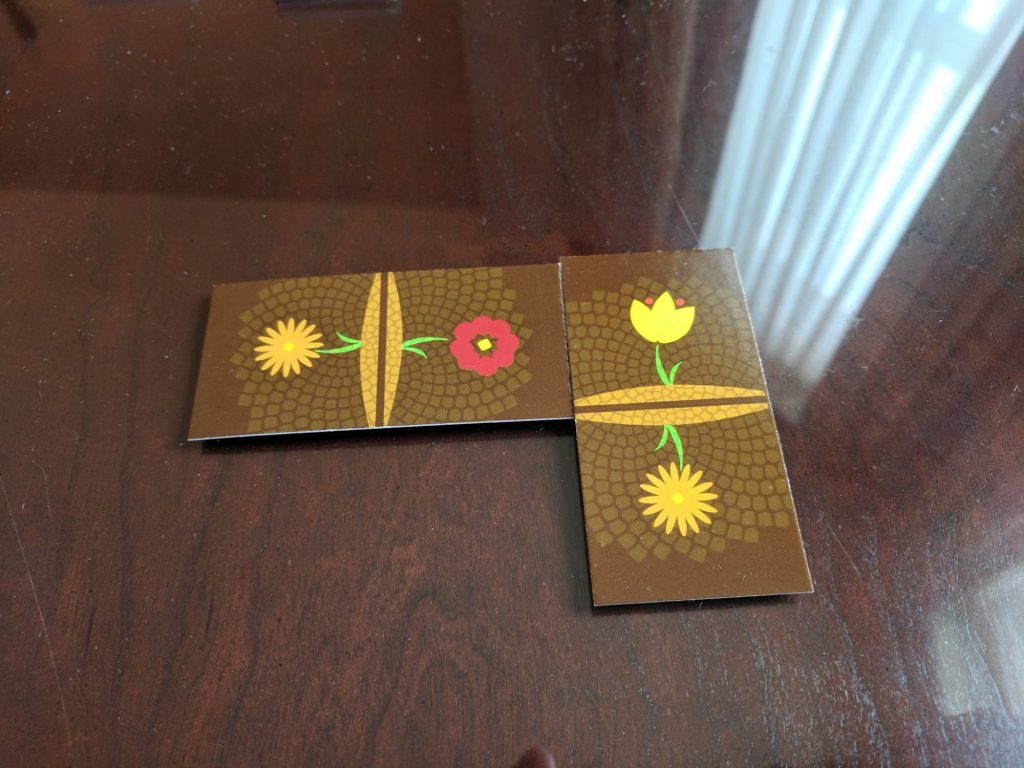
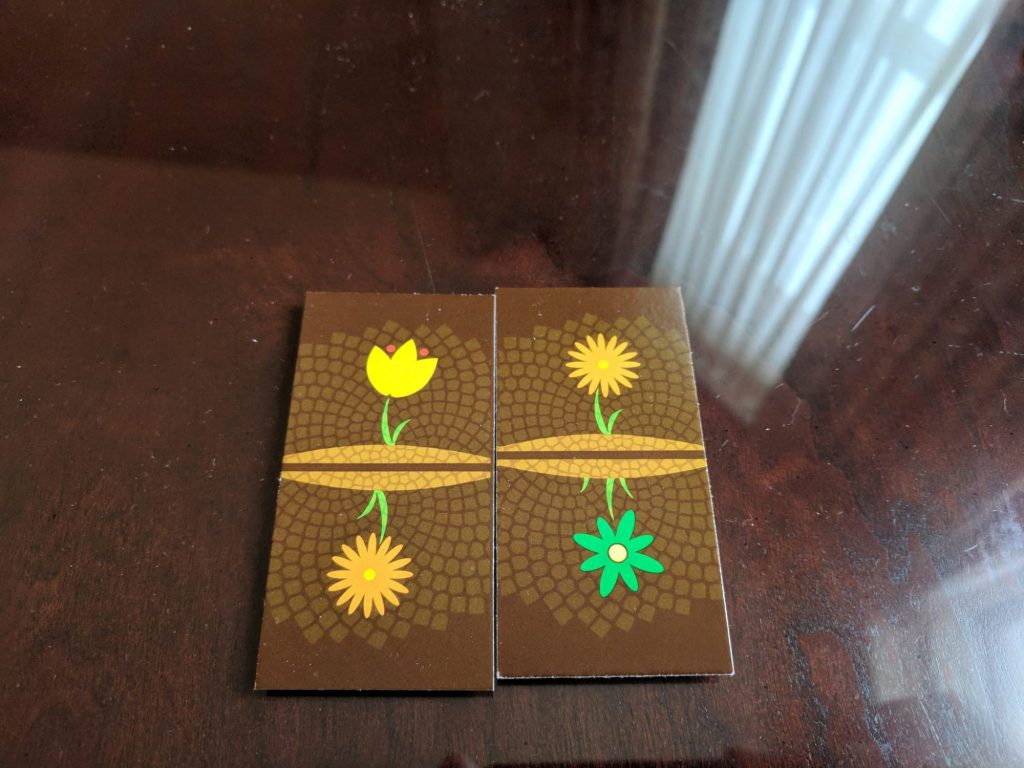
Purchase and Place Plant Tiles
Plant tiles typically have resource costs listed in the top corners. Select a face up plant tile, pay the costs, and place it on top of seedling tiles so that it covers up two seedling halves as indicated by the flower types on the bottom corners of the plant tiles. Some plant tiles have multiple placement choices, you can choose either one.

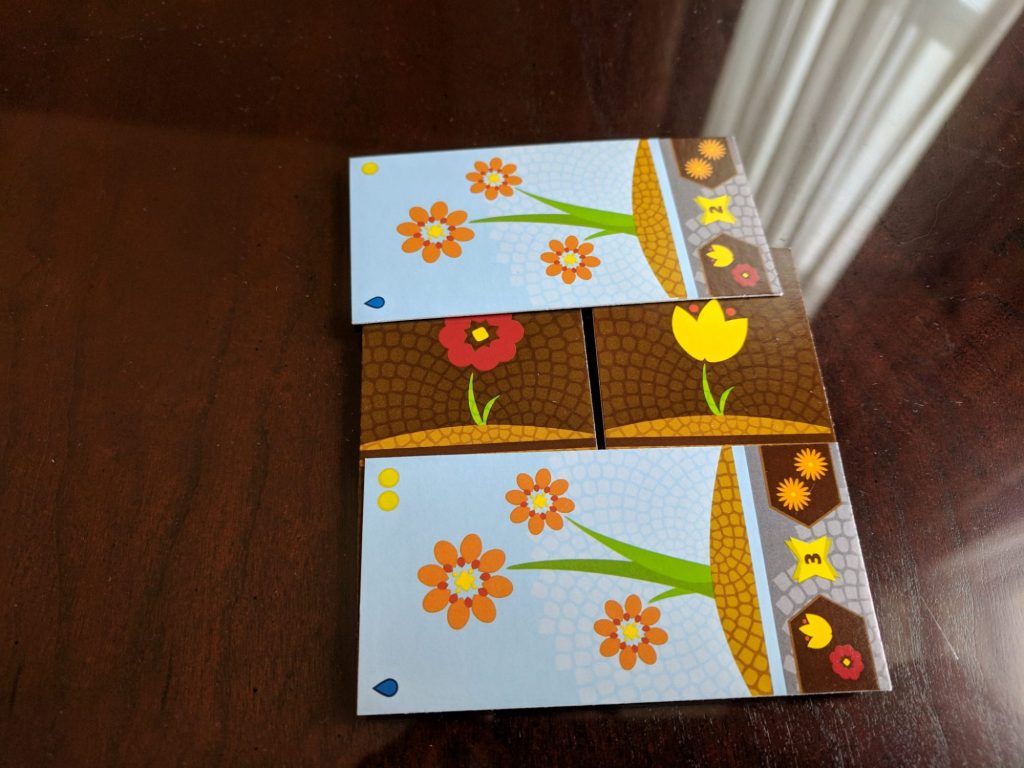
Acquire Resources
Gain three resources, but no more than two of the same type.
Place Flower Tiles
Choose a flower tile from your hand and place onto two plant tiles which match the requirements listed on the flower tile. After placing the flower tile, you also get to acquire three resources as above.
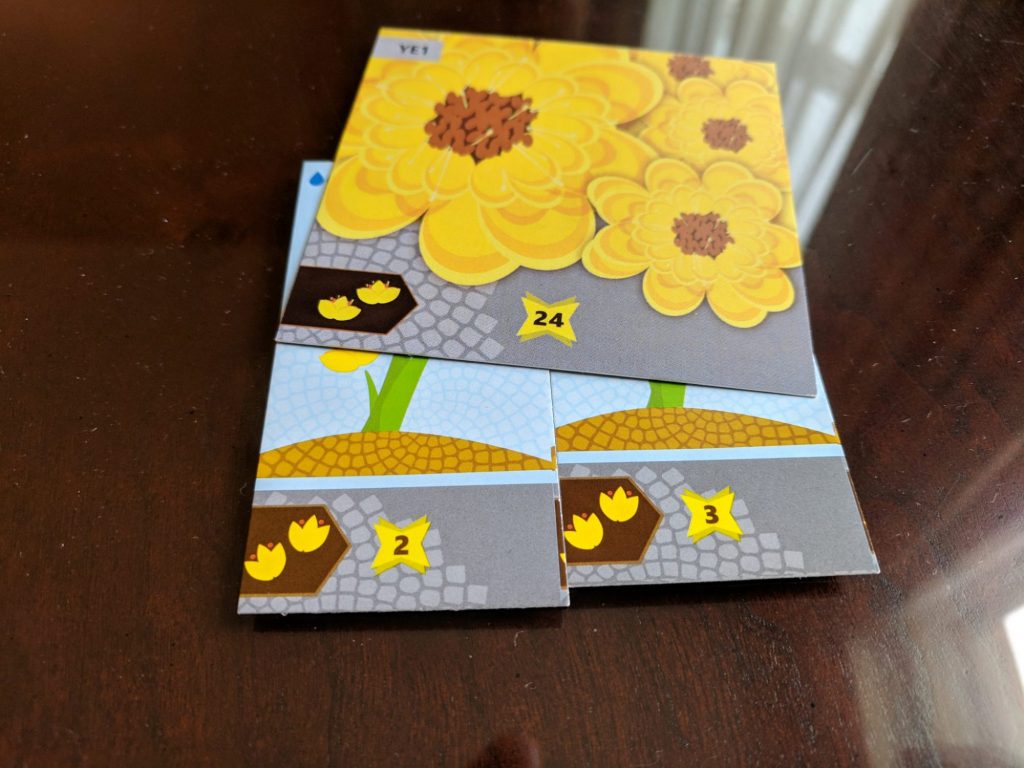
The last turn is triggered when the last seedling tile is acquired or when a player places their fourth flower tile. Each player gets the exact same number of turns, so only remaining players up to the first player get to play after the last turn is triggered. Calculate the prestige score by consulting each of the player’s flower tiles and any visible plant tiles. Seedling tiles have no value outside of the flower tile scoring requirements. The highest scoring player is named the Master Gardener.
Thoughts
I love Gartenbau; when I think of playing it, I imagine sitting at a table with my wife and another couple with cups of coffee and slices of cheesecake while staring at my garden in contemplation. Why? I love the simplicity combined with complex scoring. In that way, it’s similar to the Ticket to Ride series which I also enjoy. There are simple choices to make each round, but those simple choices are part of a longer more complex strategy – if you desire it. With 21 flower scoring tiles and a drafting procedure, you have some say in what scoring you attempt but also face a lot of variation from game to game. Those possibilities with the overall feel of the game have me itching to play again and go for a better score.

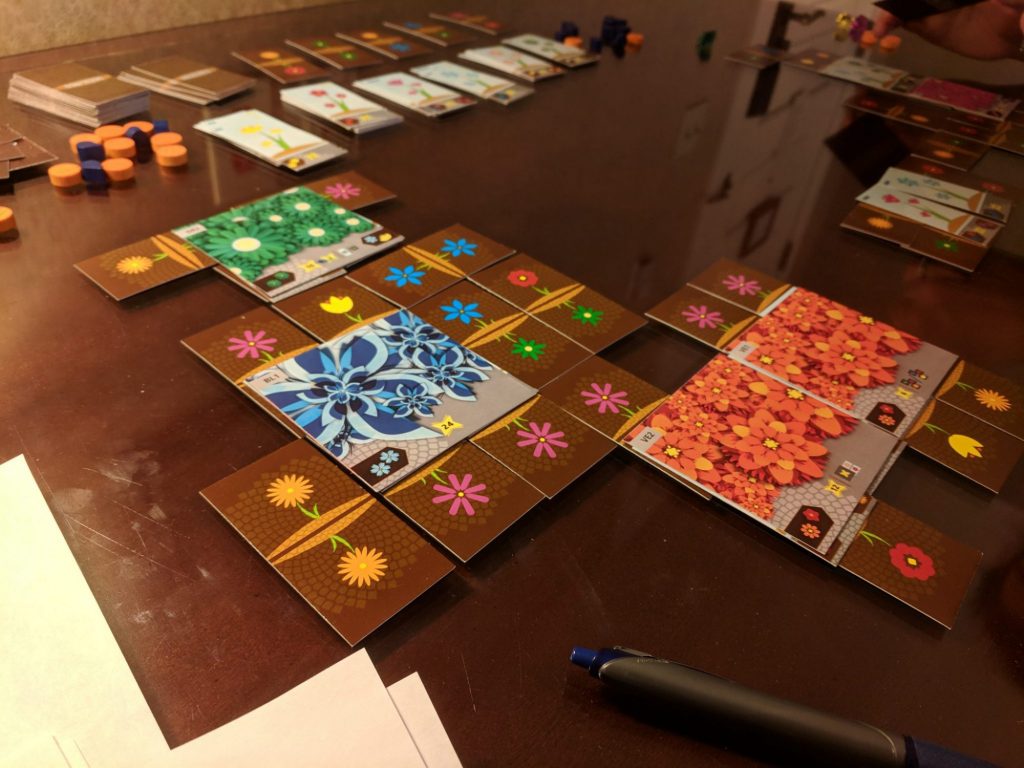
I don’t believe this game is for everyone. Players wanting more interaction should look elsewhere, as with separate gardens, there is little you can do to to interfere or influence other players. Gartenbau is very much the village garden contest; you put your own gardening skills to the test and strive to grow a more impressive garden than your neighbors and their famous rose bush.
I was musing to myself about the low player interaction and also contemplating which games on my shelf I would replace. Carcassonne was the first to mind. Then it struck me – a mashup of the shared countryside building of Carcassonne with Gartenbau might make a more interactive game. One shared garden with ways to mark ownership of personally grown flowers. Maybe a future expansion?
Because I received only a prototype for review purposes, it’s my intent to back the Kickstarter campaign if the price is reasonable. I look forward to getting quality components of a game that I hope will become a classic.


